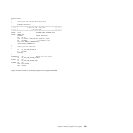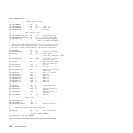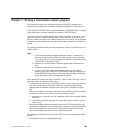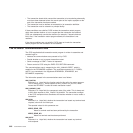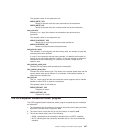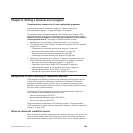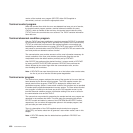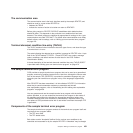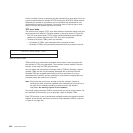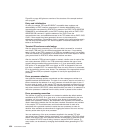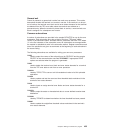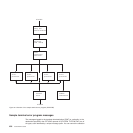
Chapter 8. Writing a terminal error program
Considerations common to all user-replaceable programs
Note that the comments contained in Chapter 5, “General notes about
user-replaceable programs,” on page 435 apply to this chapter.
This chapter contains information about the CICS terminal error program (TEP),
which handles error conditions for devices that use the sequential access method.
Note that node error programs, not terminal error programs, must be used for
VTAM-supported devices. The chapter is divided into three sections:
1. “Background to error handling for sequential devices” is an overview.
2. “The sample terminal error program” on page 451 describes the CICS-supplied
sample TEP. It contains:
v “Components of the sample terminal error program” on page 451
v “Structure of the sample terminal error program” on page 453
v “Sample terminal error program messages” on page 456
v “Generating the sample terminal error program” on page 458.
3. “Writing your own terminal error program” on page 470 discusses factors you
need to consider when writing your own terminal error program. It contains:
v “Why write your own terminal error program?” on page 470
v “Restrictions on the use of EXEC CICS commands” on page 470
v “Addressing the contents of the communication area” on page 471
v “Addressing the contents of the TACLE” on page 473
v “Example of a user-written terminal error program” on page 475.
Background to error handling for sequential devices
CICS terminal error handling is based on the assumption that most users want to
modify CICS operations in response to terminal errors. Because CICS cannot
anticipate all possible courses of action, the error-handling facilities have been
designed to allow maximum freedom for users to create unique solutions for errors
that occur within a terminal network.
The following CICS components are involved in the detection and correction of
errors that occur when sequential devices are used:
v Terminal control program (DFHTCP)
v Terminal abnormal condition program (DFHTACP)
v Terminal error program (DFHTEP).
These components are discussed in the following sections. (The corresponding
CICS components for logical units are discussed in Chapter 9, “Writing a node error
program,” on page 479.)
When an abnormal condition occurs
When an abnormal condition associated with a particular terminal or line occurs, the
terminal control program puts the terminal out of service and passes control to the
terminal abnormal condition program (DFHTACP) which, in turn, passes control to a
© Copyright IBM Corp. 1977, 2011 449



